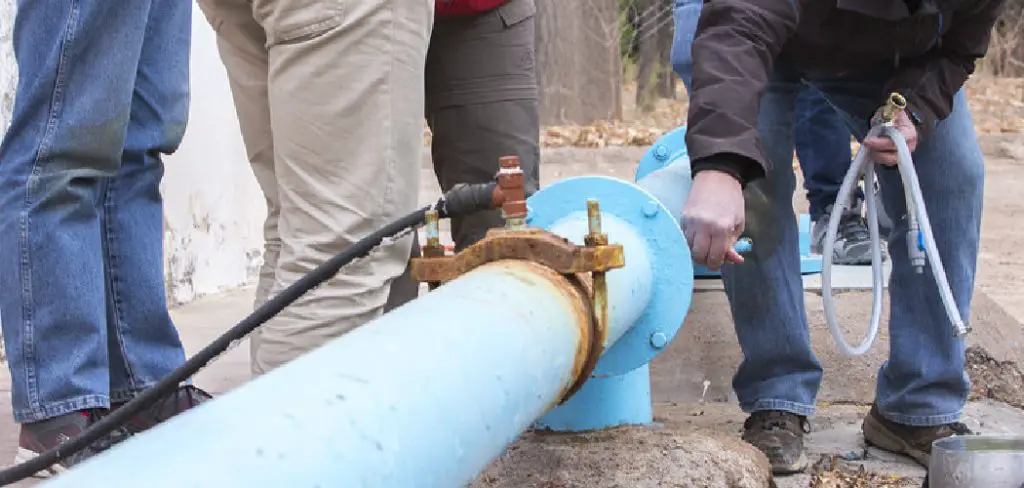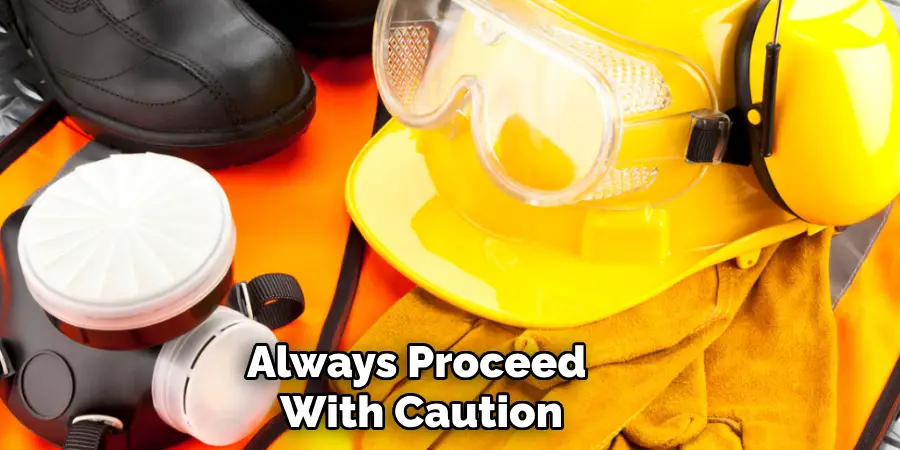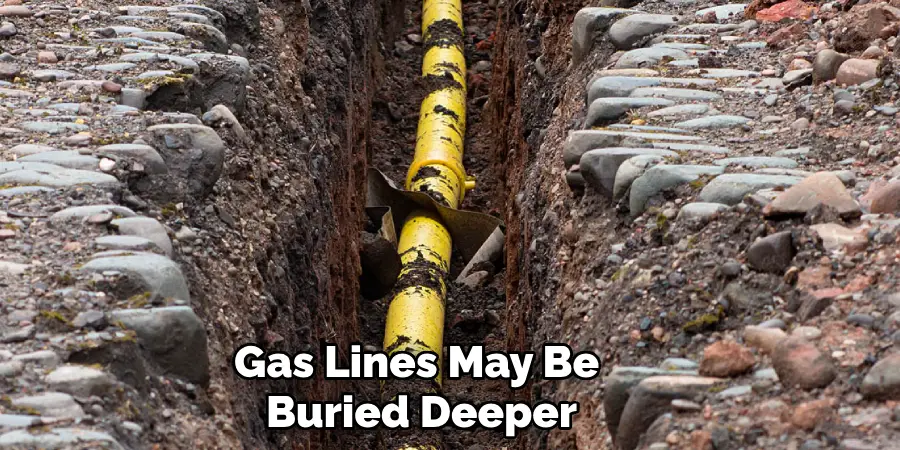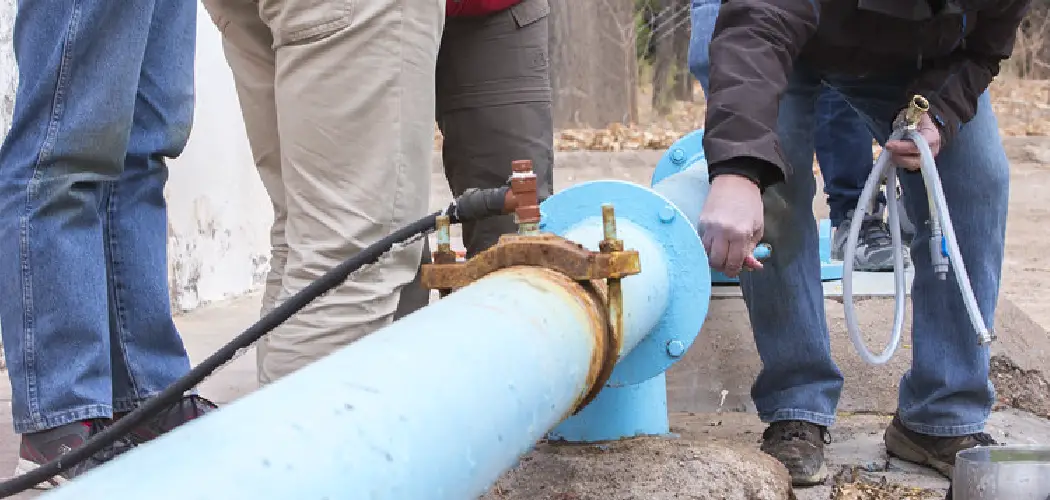Are you a homeowner who is looking to take control of your energy usage by installing an appliance such as a gas stove, fireplace, or outdoor kitchen? If so, you are likely in need to know how to properly find and locate a gas line. Gas lines can sometimes be tricky if you do not possess the right skills for their installation.

We understand that locating and connecting these utilities may seem like an overwhelming task but don’t worry – our guide has got you covered! In this blog post we will outline insider tips on how to find a gas line so that you can easily connect the necessary appliances safely and accurately. Keep reading to learn about all the steps involved in finding a gas line!
Why is It Important to Find a Gas Line?
1 . To Avoid Accidents
When working on any home improvement project that involves digging or excavating, it is crucial to know the location of gas lines. This is because accidental damage to a gas line can lead to dangerous leaks, explosions, and fires. By knowing how to find a gas line, you can prevent any potential accidents from occurring and keep yourself and your surroundings safe.
2 . To Prevent Costly Repairs
If you accidentally damage a gas line, repairing it can be a costly affair. Not only will you have to pay for the repairs, but you may also have to face fines and penalties from your local utility company. By finding the gas line beforehand, you can avoid these expenses and potential legal issues.
3 . To Ensure Compliance
In most areas, it is required by law to call a utility company before digging. This is to ensure that all gas lines are located and marked before any excavation takes place. By knowing how to find a gas line, you can comply with this legal requirement and avoid any potential consequences.
4 . To Plan for Future Projects
Knowing the location of gas lines can also be helpful for planning future projects. For example, if you are considering installing a pool or building an addition to your home, knowing where the gas lines are located can help you plan accordingly and avoid any potential conflicts.
12 Ideas on How to Find a Gas Line
1 . Knowing Your Gas Line System
Before attempting to find a gas line, it is important to have some basic knowledge about the gas line system in your home or property. This includes knowing where your main shut-off valve is located and understanding how the pipes are connected. Also, familiarize yourself with the different types of gas lines (natural gas or propane) and their potential hazards.
2 . Safety First
Safety should always be your top priority when working with gas lines. Make sure to turn off all appliances and pilot lights before starting your search. Also, keep an extinguisher nearby in case of emergencies. If you are not confident in your ability to find the gas line, it is best to call a professional.

3 . Check Your Property Records
If you live in a newer home or property, there may be records of where the gas lines are located. Check with your builder or previous owners for any information they may have regarding the gas line system.
4 . Look for Gas Line Markers
In some areas, gas lines are marked with above-ground markers. These markers usually have a yellow or orange color and indicate the approximate location of the gas line underground. Also make sure to check for any markers on nearby properties that may intersect with your gas line.
5 . Follow the Meter
Your gas meter is usually located near the front of your property and can give you an indication of where the gas line runs. Trace the pipes leading from the meter towards your home or other connected structures.
6 . Inspect Your Appliances
If you have gas appliances, such as a stove or water heater, you can follow the pipes leading to them to get an idea of where the main gas line is located. This can help narrow down your search.
7 . Use Your Senses
While natural gas is odorless, a substance called mercaptan is added to give it a distinct smell. If you are close to a gas line, you may be able to smell this strong, unpleasant odor. Additionally, you may also hear a hissing sound coming from the gas line if there is a leak.
8 . Look for Disturbances in Your Yard
If your gas line runs underground, there may be visible disturbances in your yard such as uneven ground or areas of dead vegetation. This can be a sign that the gas line is buried in that area.
9 . Utilize Technology
There are various tools and devices available to help locate gas lines, such as electronic gas detectors or ground-penetrating radar. These can be useful if you are having trouble locating the gas line visually.
10 . Call Your Gas Company
If you are still unable to locate your gas line, it is best to contact your local gas company for assistance. They will have the necessary equipment and expertise to accurately locate and mark your gas line.

11 . Be Careful When Digging
If you need to dig in an area where a gas line may be present, use extreme caution. Make sure to call your local utility company to have them mark the location of any underground lines before beginning any excavation.
12 . Regular Maintenance
Once you have located your gas line, it is important to regularly maintain and inspect it for any potential issues. This will help ensure the safety and efficiency of your gas line system. If you notice any strange odors, noises, or disturbances in your yard, contact a professional immediately.
Overall, it is important to always proceed with caution when working with gas lines and to seek professional help if needed. By following these tips and suggestions, you can effectively find and maintain your gas line for a safe and functional home or property.

Frequently Asked Questions
What Precautions Should I Take Before Starting?
Before starting the process of finding a gas line, there are a few precautions that you should take to ensure your safety and the safety of those around you. Always wear proper protective gear such as gloves, goggles, and closed-toe shoes. Check for any potential sources of ignition nearby, such as open flames or electrical tools, and make sure to turn them off before beginning. Also, be aware of any potential hazards such as loose soil or rocks that could cause you to trip or fall.
Is It Safe to Use a Metal Detector?
While metal detectors can be useful in locating underground gas lines, it is important to note that not all gas lines are made of metal. Some may be made of plastic or other non-metal materials. Additionally, metal detectors are not foolproof and may not detect certain types of gas lines. It is always best to double-check with a professional before relying solely on a metal detector.
How Deep Are Gas Lines Typically Buried?
Gas lines are typically buried anywhere from 12-18 inches deep, but this can vary depending on the location and terrain. It is important to keep in mind that gas lines may be buried deeper in certain areas, such as under driveways or roads. It is best to consult with your local utility company for more specific information.

How Do I Find the Exact Location of a Gas Line?
To find the exact location of a gas line, you can use a variety of methods such as using a metal detector, performing a visual inspection of your property for gas line markers, or contacting your local utility company for assistance. It is important to note that gas lines may not always run in a straight line and can have various turns and bends.
What Should I Do If I Suspect a Gas Leak?
If you suspect there is a gas leak on your property, do not attempt to find the gas line yourself. Leave the area immediately and call your local utility company or emergency services for assistance. Gas leaks can be extremely dangerous and should only be handled by trained professionals.
Also, never use any electronic devices or open flames in the area of a suspected gas leak. Safety should always be your top priority when dealing with potential gas line issues. Overall, taking the time to properly locate and identify a gas line can help prevent accidents and ensure the safety of yourself and those around you.
Conclusion
Hopefully, you now have an understanding of how to find a gas line. Knowing your environment is key, and with the right safety protocols in place, there’s no reason why you shouldn’t be successful.
With a bit of knowledge about how these lines are installed after construction and a thorough assessment of the area before digging of any kind, you can rest assured that it is possible for you to find that pesky gas line. So go forth, be vigilant, and fear not: gas lines are not as intimidating to find as they may seem!

